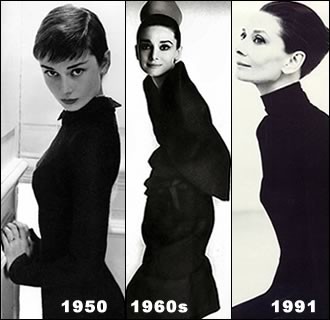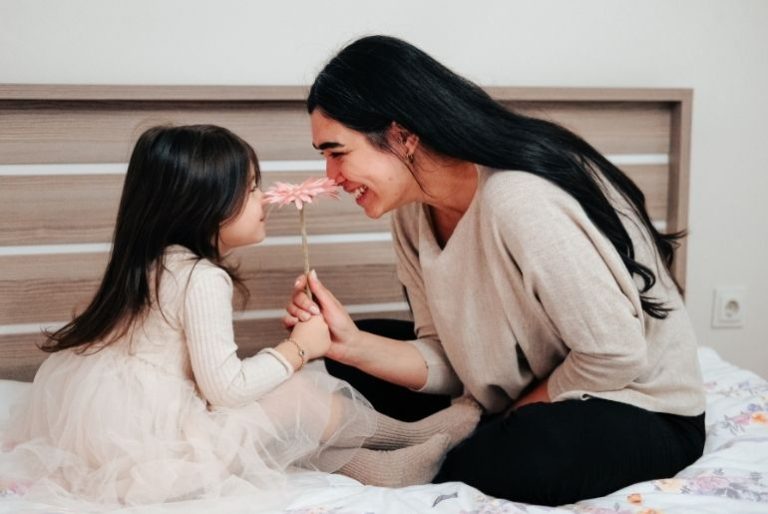What exactly do we mean when we say someone’s “got style”? We often think of style as a gift that some people naturally exhibit without apparent effort, some people work hard to achieve, or that some people will simply never have. But what is it exactly?
I once thought it was the ability some people had to look confident and sophisticated, and generally have an air of being too busy being fabulous to bother noticing someone like me.
As a girl there were several girls in the year ahead of me at primary school who I thought always looked very ‘stylish’. They had long shiny blonde hair and wore the latest off-the-shelf fashions in trendy fabrics and fabulous fluorescent colours (keep in mind, this was the 80’s). They occasionally took notice of me, to offer me style advice like ‘don’t wear your socks pulled up’, or ‘don’t wear black and navy in the same outfit’.
Is style a finite list of do’s and don’ts? Fashion magazines and websites seem to be full of ‘do’s and don’ts’, and are full of praise for the celebrities who do, and full of condemnation for those who don’t meet this black-and-white standard. And just as we’re all starting to get the hang of the rules, they go and change.
This seemed completely illogical and unfair to me, so I decided to do some research of my own.
I looked up dictionary definitions, the writings of and about women who are universally acknowledged as “Stylish”, and, of course, lots of photos.
There do seem to be many different definitions! Just about one for every person.
That does seem to be the common theme. The idea that how someone dresses is consistent with their personality, values and lifestyle.
Looking at images of style icons such as Audrey Hepburn, Elizabeth Taylor, and Kate Middleton, you can clearly see the picture that a thousand words could write about their personality and how they felt about the situation they were in.
Audrey Hepburn (1929-1993) comes at the top of most people’s list of style icons. Trade marks included high necklines, black, and simple, precisely chosen details or accessories. These suited her physically (the high necklines focused attention on her shoulders, neck, and face; the colour complimented her dark eyes and the coolness in her skin tone; and the simplicity suited her petite frame). They also summarised key personality characteristics, such as her modesty; her deep, melancholy intelligence; and her courage to be herself, to be different and to surprise people.
Style does, on the whole, seem to be about personality. If you have personality, and the honesty and confidence to express it, then you have style.
The better you know yourself, and the better you know your environment, the more stylish you are likely to become.
These are awfully deep philosophical questions to try to answer before breakfast while you’re standing in front of your wardrobe in your underwear.
Perhaps that’s why is usually takes a women till she’s in her 30’s (and a man till his 50’s – as men are at quite a disadvantage in this area) to really get a grasp on what their style is.
(Prior to this we need something to wear, so we have fashion to provide us with answers on what looks good. By the time we reach our 30’s-40’s however, we’re expected to have worked it out, and to become independent of fashion’s fast trends. But that’s another article!)
If we still aren’t sure what our style is, there are a couple of helpful steps to honing in on our own definition of style.
Step 1: Look at what you like.
I keep a collection of fashion magazines and catalogues on hand for this exercise, and the internet is an even greater resource. Start a scrapbook, visual diary, or pinterest board of outfits you like the look of.
Step 2: Fine-tune what you like.
Look for the themes among the images you collect. Do you notice a lot of sportswear, or floral prints, or unusual up-cycled jewellery?
Step 3: Write their definition.
Putting all these themes together, what defines the style of the items you’ve collected? Who would wear all of these things and where?
Step 4: Define yourself.
If you’ve ever done any kind of personality test, this part will be relatively easy. If you’ve never thought much about what makes you tick, it might take a bit more time.
a) Start with your personality characteristics. You could write down as many adjectives as you can think of and then highlight the ones you feel describe you. (NB You could turn this into a game with your family one cold rainy winters day. Collect good adjectives and then take turns to match them up with each person.)
b) The next is to think about your personal values. What are things you really care about? What motivates you? What makes you angry? (Often a good way to tell if something is important to you is how you feel when someone else shows a disregard for it.) It’s good to show your values through your style. It’s no good accidentally buying an English rugby shirt when you support the All Blacks, for example.
c) Finally, note down aspects of your lifestyle, including your goals and aspirations. What do you do? Who do you spend time with? How do you want them to see you?
Step 5: Compare definitions.
Look at the definition you’ve made about yourself, and the definition of the styles that attract you. Where are there similarities? Where are there differences?
It’s rare for the two definitions to match exactly first time around, as very few of us are that self-aware or clear on our tastes. But don’t worry if they’re quite different. That can tell you a lot too. Perhaps you’ve focused on your personality but not your lifestyle. Sometimes we choose items according to what we know someone else would like, or according to what we think we should like.
Now that you know more about yourself, have another go at choosing images. Look for images that do have the same definition of style that you do.
To bring your definition to life, look in your wardrobe and ask yourself if these items share your definition of style – do they tell the same story? If not, what items can you adjust so they do share your definition of style? Which items in particular clash with your style? Adjust what you can, retire what you cannot. Perhaps you have a friend, or family member, who you think an item might match?
When you’re shopping for new items to adopt into your wardrobe, stick to your definition of style. Don’t be persuaded by the latest trends, the bright lights and big smile of your friend or the sales assistant. Things can look wonderful on your figure, but if they don’t match your style, they’ve been made for someone else who would miss out if you bought it, and you’d look like you borrowed from your neighbour’s wardrobe.
Define your unique style and be confident. You will be inspiring the next generation and letting them know it’s good to be themselves, and they don’t have to listen to what others tell them about socks or colour combinations. (Incidentally, thanks to my mother’s example, I still pull up my socks and wear black and navy with panache).
As a post-note, our lifestyles, personalities, and values subtly but steadily change over the course of time. It’s a good idea to keep looking at what attracts us, and reviewing what’s important to us and what impression we want to create. Gradual adjustments save us from getting stuck in a style rut, or even trickier, loosing track of exactly what defines us and having to catch up. I usually do a quick review before any shopping trip, so as items wear out and are replaced, my wardrobe ebbs and flows along with the subtle changes in my lifestyle and personality.





